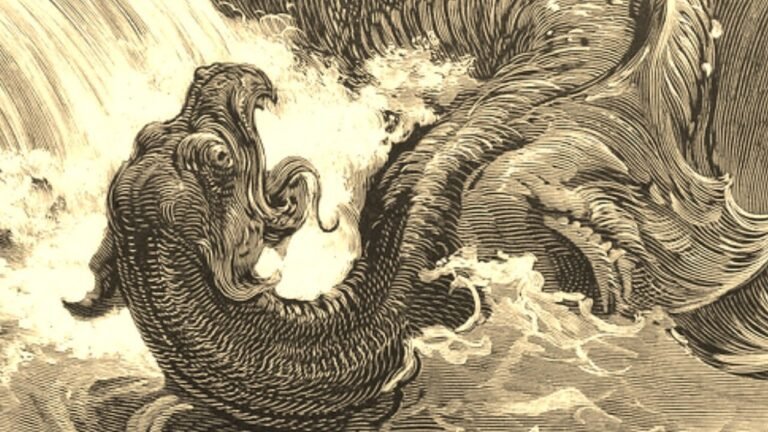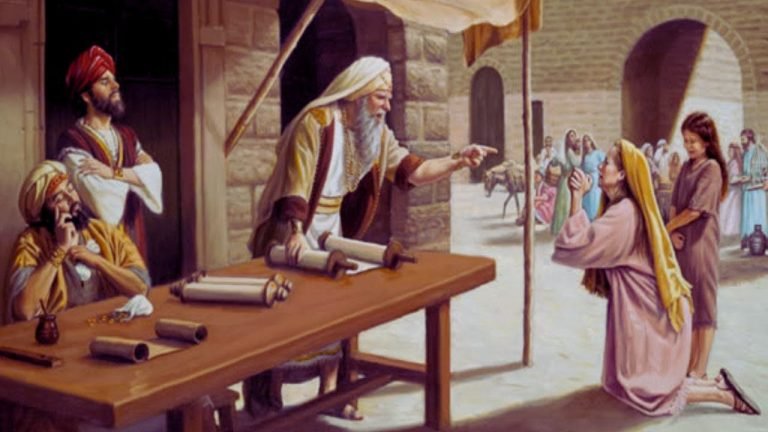Understanding the Leviathan: Biblical Significance and Symbolism
In biblical literature, the term leviathan evokes imagery of a formidable sea creature, symbolizing chaos and power. Found in texts such as Job, Psalms, and Isaiah, the leviathan is often depicted as a monstrous entity that embodies the forces of nature and the unknown. This enigmatic figure has intrigued scholars and theologians for centuries, sparking debates about its meaning and significance within the broader context of scripture. What is a leviathan in the Bible, and how does it reflect the ancient world’s understanding of divine authority and cosmic order?
What is the significance of Leviathan in the Bible?
Leviathan emerges in biblical texts as a multifaceted symbol, representing both chaos and the formidable adversaries of Israel. In the Book of Isaiah, this sea serpent epitomizes the threats posed by Israel’s enemies, embodying the tumultuous forces that challenge the nation’s stability and faith. This portrayal underscores the struggles faced by Israel in a world filled with powerful opposition.
Conversely, in the Book of Job, Leviathan takes on a more enigmatic form as a fire-breathing crocodile, reflecting the awe-inspiring aspects of creation that elude human understanding. This depiction suggests a creature that exists beyond the realm of human control, serving as a reminder of the divine power and mystery inherent in the natural world. Together, these representations of Leviathan highlight the tension between chaos and order, as well as the profound mysteries of existence that humanity grapples with.
Is Leviathan considered good or evil?
In Gnostic thought, the concept of Leviathan transcends simple notions of good and evil, embodying a complex duality within the cosmos. Represented as a dragon-shaped archon, Leviathan is depicted as an ouroboros, a serpent consuming its own tail, symbolizing the cyclical nature of existence and the entrapment of souls within a flawed reality. This imagery serves to illustrate the idea that Leviathan is not merely a force of evil but rather a representation of the intrinsic darkness that permeates the universe.
The role of Leviathan is pivotal in the Gnostic cosmology, as it encapsulates the material world and stands as a barrier between the lower realm, governed by the Archons, and the divine realm of God. This separation highlights the struggle between spiritual enlightenment and the ignorance imposed by the physical world. In this sense, Leviathan can be seen as a necessary, albeit malevolent, entity that propels the journey of the soul towards awakening and liberation.
Ultimately, the characterization of Leviathan as good or evil depends on one’s perspective within this intricate framework. While it generates the intrinsic evil that plagues existence, it also prompts seekers to transcend their limitations and quest for higher understanding. Thus, Leviathan embodies the paradox of existence, serving as both a source of darkness and a catalyst for spiritual growth.
What is the number of leviathans that God created?
In the biblical narrative, God is said to have created two leviathans, symbolizing the dual forces of chaos and order within the universe. These colossal creatures embody the complexities of creation, serving as a reminder of the balance that must be maintained in a world rife with contrasting elements. The existence of two leviathans highlights the divine intention to govern both the wild and the tame, illustrating that every aspect of life has its place and purpose.
The destruction of one leviathan carries profound significance, representing the necessity of control over chaos. This act serves as a metaphor for the challenges that arise when balance is disrupted, emphasizing the importance of restraint and moderation in the face of overwhelming power. The narrative invites reflection on the delicate interplay between freedom and limitation, urging humanity to recognize the consequences of unchecked forces in their lives.
Ultimately, the story of the leviathans encourages us to contemplate our own roles within creation. By understanding the divine message of balance and control, we can strive to harmonize the various aspects of our existence. In doing so, we honor the intricate tapestry of life that God has woven, acknowledging that both chaos and order are essential to the beauty and complexity of our world.
Exploring the Depths of Biblical Imagery
The vivid imagery found within the Bible serves as a profound lens through which we can explore deeper spiritual truths and human experiences. From the lush landscapes of the Garden of Eden to the tumultuous seas crossed by Moses, these images evoke emotions and provoke contemplation. They invite readers to immerse themselves in narratives that reveal the complexities of faith, redemption, and divine love. Each metaphor and symbol not only enriches the text but also resonates with the personal journeys of believers, making ancient stories relevant in contemporary lives.
As we delve into these rich tapestries of imagery, we uncover layers of meaning that resonate across cultures and generations. The shepherd’s care for his flock mirrors God’s guidance in our lives, while the light of the world illuminates our path in times of darkness. This interplay of imagery not only enhances our understanding of scripture but also deepens our connection to the divine. By engaging with these powerful visuals, we can cultivate a more profound appreciation for the sacred narratives that have shaped faith traditions throughout history.
The Leviathan: A Symbol of Chaos and Control
The Leviathan, an awe-inspiring sea creature from myth and literature, embodies the duality of chaos and control that permeates human existence. Often depicted as a monstrous force of nature, it evokes fear and respect, representing the unpredictable elements of life that challenge our understanding. Yet, within its depths lies a metaphor for governance and societal order, illustrating how authority can emerge from the very chaos it seeks to tame. This powerful symbol prompts us to reflect on our relationship with power, nature, and the delicate balance we strive to maintain in a world where chaos and control are inextricably linked.
Unraveling Ancient Texts: The Leviathan’s Role
Throughout history, ancient texts have served as windows into the beliefs, fears, and aspirations of past civilizations. Among these enigmatic writings, the concept of the Leviathan stands out as a powerful symbol of chaos and control. Often depicted as a monstrous sea creature, the Leviathan represents the untamed forces of nature and the human struggle to impose order upon them. This duality invites exploration into how different cultures interpreted the Leviathan, reflecting their moral and philosophical frameworks.
The Leviathan’s role transcends mere mythology; it has been a focal point in theological and political discourse. Texts such as Thomas Hobbes’ “Leviathan” illustrate the creature as a metaphor for the state and its absolute power, drawing parallels between the chaos of the natural world and the necessity of governance. By examining these interpretations, we uncover the intricate relationship between human societies and their understanding of authority, fear, and the natural order. The Leviathan thus becomes a lens through which we can analyze the evolution of thought regarding power dynamics.
In unraveling these ancient texts, we not only gain insight into the cultural significance of the Leviathan but also into the universal themes that resonate through ages. The tension between chaos and control, the quest for understanding the unknown, and the need for societal structure are all encapsulated in this formidable figure. As we delve deeper into the narratives surrounding the Leviathan, we discover a rich tapestry of human experience that continues to inform our contemporary worldview, reminding us of the timeless nature of these profound inquiries.
The Leviathan in Theology: Meaning and Metaphor
In theological discourse, the Leviathan emerges as a powerful symbol representing chaos and the primordial forces of nature. Rooted in ancient texts, particularly in the Book of Job, it embodies the tension between divine order and the untamed aspects of creation. This metaphor challenges believers to confront the complexities of existence, suggesting that true understanding of the divine includes grappling with the unpredictable and often fearsome elements of life.
The imagery of the Leviathan extends beyond mere chaos; it encapsulates the struggle for power and the quest for meaning in a world rife with uncertainty. In many interpretations, this creature serves as a reminder of humanity’s limitations in controlling the forces that govern existence. The Leviathan becomes a metaphor for the human condition, prompting reflection on the nature of free will, divine sovereignty, and the moral dilemmas that arise when confronting overwhelming odds.
Ultimately, the Leviathan invites theologians and believers alike to explore the delicate balance between faith and doubt. It encourages a deeper examination of the relationship between humanity and the divine, challenging individuals to find hope and purpose amidst life’s tumultuous waves. Through this lens, the Leviathan transforms from a mere symbol of chaos into a profound catalyst for spiritual growth and understanding, urging the faithful to navigate their journeys with courage and wisdom.
From Sea Creature to Spiritual Icon: The Leviathan’s Journey
The Leviathan, once a fearsome sea creature, has transcended its origins to become a powerful symbol in various spiritual beliefs. In ancient texts, this massive beast represented chaos and the untamable forces of nature, evoking both terror and awe. As cultures evolved, so too did the interpretation of the Leviathan, shifting from a mere creature of the depths to a representation of the struggle between humanity and the unknown, reflecting our innate desire to conquer fears that lurk in the shadows.
Throughout history, the Leviathan has appeared in religious and philosophical contexts, often embodying the concept of divine power and cosmic order. In some traditions, it signifies the balance between chaos and creation, serving as a reminder of the importance of harmony in the universe. This transformation from a monstrous entity into a revered icon illustrates the human capacity to find meaning in fear, ultimately turning a symbol of destruction into one of enlightenment and spiritual growth.
Today, the Leviathan continues to inspire art, literature, and spiritual discourse, resonating with those who seek to understand the complexities of existence. By embracing the duality of the Leviathan as both a creature of the sea and a spiritual metaphor, individuals can explore their own journeys through life’s turbulent waters. This enduring legacy reminds us that even the most daunting challenges can lead to profound insights, inviting us to reflect on our relationship with the world and the mysteries it holds.
The Leviathan in the Bible serves as a powerful symbol of chaos and the untamed forces of nature, reflecting humanity’s struggle against the unknown. This enigmatic creature, often depicted as a formidable sea monster, challenges our understanding of order and control in a world that can be both awe-inspiring and terrifying. Its presence in biblical texts invites deeper contemplation about the balance between divine power and the forces that disrupt our lives, reminding us that some mysteries may never be fully understood. Embracing this complexity enriches our spiritual journey and highlights the timeless relevance of ancient narratives in modern life.







